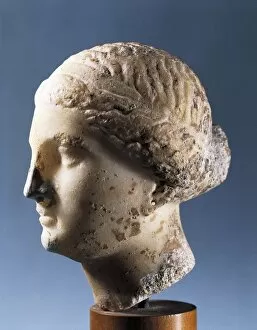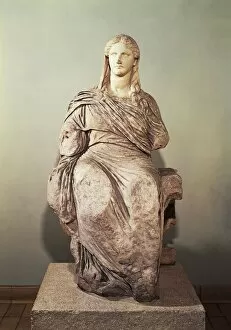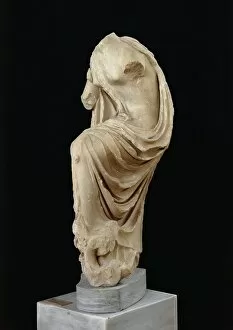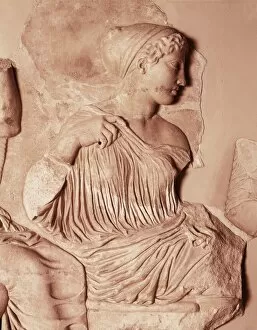Greek Goddess Collection (#5)
Step into the enchanting world of Greek mythology and discover the captivating beauty of the Greek goddesses
For sale as Licensed Images
Choose your image, Select your licence and Download the media
Step into the enchanting world of Greek mythology and discover the captivating beauty of the Greek goddesses. From Crenaia, the nymph of the Dargle, to Eirene with her infant Ploutos, these divine beings have captured our imagination for centuries. In Munoz Degrain's masterpiece "Bathing of the Nymphs, " we witness a serene scene where ethereal nymphs immerse themselves in crystal-clear waters, radiating an otherworldly glow. Their grace and elegance remind us of their celestial origins. The marble bas-relief depicting the Triad of Eleusinian Mysteries transports us to ancient Eleusis. Here, Persephone, Demeter, and Triptolemus stand united in a sacred bond that symbolizes rebirth and fertility. This intricate artwork is a testament to their power over life's cyclical nature. Antonio Canova's "Cupid and Psyche" mesmerizes with its delicate portrayal of love's triumph over adversity. The intertwined figures exude passion as they embrace each other amidst swirling emotions—a timeless reminder that true love conquers all obstacles. The Hellenistic marble statue known as Medici Venus stands as a testament to feminine beauty and allure. With her graceful pose and flawless features, she embodies sensuality while captivating all who gaze upon her timeless form. Austria presents an awe-inspiring limestone Aedicula featuring Jupiter and Juno—an ode to divine partnership. As they stand side by side in regal splendor, their presence evokes both power and harmony within this sacred space. From Ulyanov's depiction of Pan chasing after Nymph Syrinx to various renditions of sirens such as "The Siren" by Nikolai Pavlovich Ulyanov or "La Sirena" from 1896—these mythical creatures continue to fascinate us with their seductive charm and mysterious allure.












